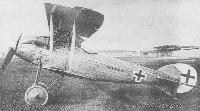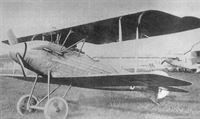
Описание
Страна: Германия
Год: 1918
Fighter
Варианты
- LFG Roland - D.VI - 1918 - Германия
- LFG Roland - D.VII - 1918 - Германия
- LFG Roland - D.XIII/D.XV - 1918 - Германия
- O.Thetford, P.Gray German Aircraft of the First World War (Putnam)
- W.Green, G.Swanborough The Complete Book of Fighters
- J.Herris Roland Aircraft of WWI (A Centennial Perspective on Great War Airplanes 9)
-
J.Herris - Roland Aircraft of WWI /Centennial Perspective/ (9)
The Roland D.VII was very similar to the prototype D.VI except for using the experimental 185 hp Benz Bz.IIIbo direct-drive V-8 engine. The experimental engine was unreliable and not ready for production, dooming the D.VII.
In the LFG Roland D.VII a Benz Bz IIIbo engine (o=without gearbox) was used. -
J.Herris - Roland Aircraft of WWI /Centennial Perspective/ (9)
The Roland D.VII prototype 224/18 was powered by the experimental Benz Bz.IIIbo ungeared V-8.
-
W.Green, G.Swanborough - The Complete Book of Fighters
Revised ailerons and tail unit were applied to the D VII before it was finally abandoned.
-
J.Herris - Roland Aircraft of WWI /Centennial Perspective/ (9)
The Roland D.VII was very similar to the prototype D.VI except for using the experimental 185 hp Benz Bz.IIIbo direct-drive V-8 engine. The experimental engine was unreliable and not ready for production, dooming the D.VII.
-
O.Thetford, P.Gray - German Aircraft of the First World War /Putnam/
L.F.G. Roland D VII (second version)
-
J.Herris - Roland Aircraft of WWI /Centennial Perspective/ (9)
Different tail surfaces were tried on the Roland D.VII prototype but the aircraft was doomed by its troublesome engine. Development of the similar Roland D.VIII, powered by the geared version of this engine, was likewise terminated due to engine problems.
-
J.Herris - Roland Aircraft of WWI /Centennial Perspective/ (9)
The Roland D.VII prototype was abandoned due to its unreliable, experimental 185 hp Benz Bz.IIIbo direct-drive V-8 engine.
O.Thetford, P.Gray German Aircraft of the First World War (Putnam)
L.F.G. Roland D VII (first version)
First of the D VII prototypes (No. 224/18), this machine was fitted with 195 h.p. Benz IIIb direct-drive engine and participated in the second D types Competition in the summer of 1918. Span, 8.84 m. (29 ft. 0 in.) Area, 20.8 sq.m. (225 sq.ft.). Weights: Empty, 666 kg. (1,465 lb.). Loaded, 885 kg. (1,947 lb.). Climb, 5,000 m. (16,400 ft.) in 26.2 min. Armament, twin Spandau machine-guns.
L.F.G. Roland D VII (second version)
This second of the two D VII prototypes (No. 3910/18), was fitted with the high-speed 195 h.p. Benz IIIb m. engine, which had reduction gears to decrease airscrew speed and resulted in a more pointed nose. Tail surfaces were markedly different from the other prototype, as was also the shape and balance of the ailerons. Armament, twin Spandau machine-guns.
Описание:







